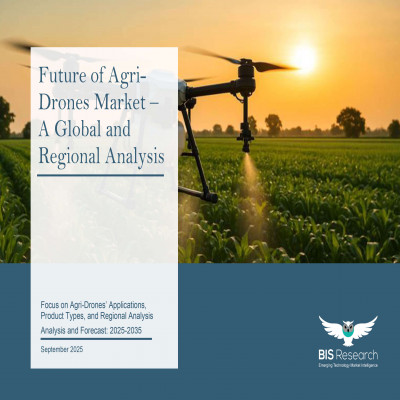A quick peek into the report
Europe Future of Agri-Drones Market
Focus on Agri-Drones’ Applications, Product Types, and Country - Analysis and Forecast, 2025-2035
Frequently Asked Questions
The Europe future of agri-drones market is projected to reach $16,462.0 million by 2035 from $1,258.1 million in 2024, growing at a CAGR of 26.30% during the forecast period 2025-2035.
AI, IoT, and automation will transform Europe’s agri-drones by enabling real-time crop monitoring, predictive analytics, and autonomous operations. Integrated with sensors and farm management platforms, drones will optimize resource use, reduce labor dependency, and boost yields, aligning with Europe’s goals for sustainable, data-driven, and precision agriculture practices.
In Europe, agricultural drones must comply with **EASA regulations**, covering operator licensing, drone registration, and safety certifications. Restrictions include flight altitude limits, visual line-of-sight operations, and special permits for beyond-visual-line-of-sight (BVLOS) missions. National variations, data privacy laws, and airspace management further regulate drone use in agricultural applications across EU countries.
The report’s unique selling propositions (USPs) lie in its comprehensive segmentation of Europe future of agri-drones market by application, drone type, and payload. It offers a thorough analysis of key trends, market drivers, and challenges across major countries, along with country-level forecasts and policy insights. The study also features detailed profiles of leading agri-drone companies and emerging startups, supported by expert analysis highlighting innovation hubs and untapped revenue opportunities. Additionally, it provides strategic guidance to help organizations enhance their competitive positioning and navigate the evolving market landscape.
Agri-drone manufacturers, agribusinesses, large farmers, Ag technology providers, government entities and policymakers, financial institutions and investors, agricultural consultants and advisory services, and R&D institutions should consider this report. It is particularly valuable for stakeholders seeking to understand the evolving landscape of the future of agri-drones market and identify growth opportunities, strategic partnerships, and areas for technology investment.

